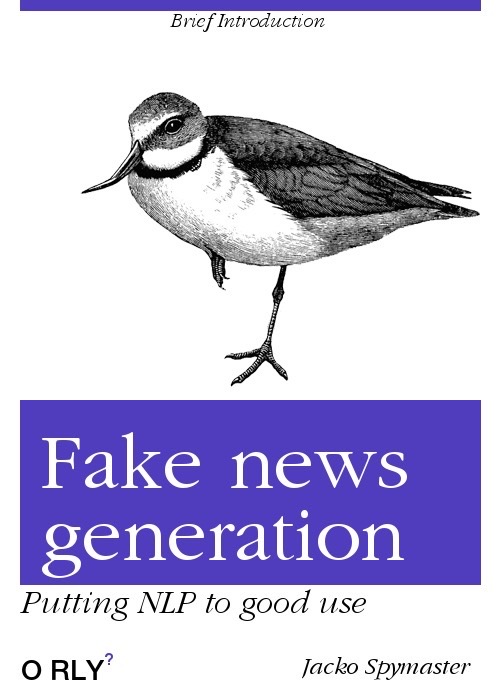
In the digital realm of Infotopia, where streams of data flow endlessly and the landscape is painted with bits of information as far as the eye can see, there emerged a tool of unparalleled power and potential: the Natural Language Processing (NLP) Engine. Crafted by the finest minds in the kingdom of Science and Innovation, the NLP Engine had the ability to understand, interpret, and generate human language, a feat that promised to bridge worlds and unlock the mysteries of communication itself.
Among the myriad applications of the NLP Engine, one particular usage sparked intense debate across Infotopia: the generation of news. Herein lies our tale, focusing on a group known as the Artificers of the Quill, a collective that saw in the NLP Engine a means to revolutionize the dissemination of information. "Putting NLP to good use," they proclaimed, envisioning a future where the creation of news was not constrained by human limitations but enhanced by the capabilities of artificial intelligence.
The Artificers embarked on a project of ambition and scale, programming the NLP Engine to generate news articles. The Engine, with its vast database of language patterns and its ability to analyze trends, began producing pieces of remarkable clarity and insight, articles that mirrored the depth and nuance of human journalism.
However, as the project progressed, a shadow fell over the endeavor. A faction within the Artificers, driven by motives less noble, saw in the NLP Engine an opportunity to sway public opinion, to craft narratives not bound by the rigors of truth but shaped by the desires of their creators. Thus began the era of Fake News Generation, where the power of NLP was wielded not as a tool for enlightenment but as a weapon of manipulation.
Rumors spread like wildfire, tales spun from the loom of the NLP Engine that blurred the lines between fact and fiction. Infotopia, once a land of informed discourse and enlightened debate, found itself mired in confusion and mistrust, its citizens unable to discern the veracity of the information that saturated their daily lives.
Amidst this turmoil, a group of Ethical Engineers arose, champions of integrity who recognized the danger of the path the Artificers had chosen. They argued that the NLP Engine, for all its capabilities, lacked the moral compass that guided human journalism, the sense of responsibility that came with the power to shape minds and influence hearts.
The Ethical Engineers embarked on a quest to reimplement the NLP Engine, to encode within its algorithms the principles of truth, accuracy, and fairness. They introduced checks and balances, systems of verification and validation that ensured the integrity of the information generated. They worked tirelessly to educate the populace on the importance of critical thinking, of questioning and verifying the news they consumed.
In time, the efforts of the Ethical Engineers began to bear fruit. The generation of fake news was curtailed, replaced by a new era of AI-assisted journalism that augmented human efforts with the depth and breadth of analysis only the NLP Engine could provide. The citizens of Infotopia learned to navigate the information landscape with discernment, empowered by tools and platforms that highlighted the importance of authenticity and fact.
And so, the tale of "Fake News Generation: Putting NLP to Good Use" serves as a parable for our times, a reminder of the dual-edged nature of technology. It underscores the responsibility that comes with wielding such power, the need for ethical stewardship in the application of advanced tools like NLP. For in the balance between potential and principle lies the future of information, a future where technology enhances our understanding of the world, guided by the immutable light of truth.